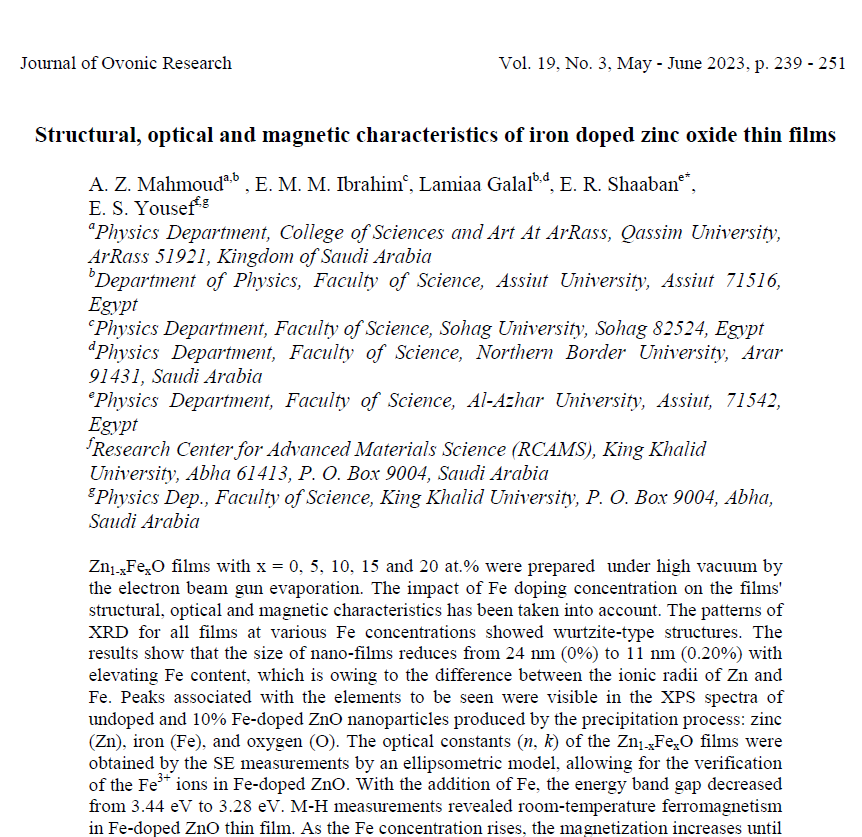Synthesize of ZnO and CuO nanoparticles with plasma jet at different treatment times and testing its optical parameters with UV-Vis-NIR
ZnO and CuO nanoparticles (NPs) were synthesized using an argon plasma jet with treatment times of 5, 10, 15, and 20 min. XRD Investigation verified the existence of hexagonal wurtzite ZnO and monoclinic CuO phases. The average crystallite sizes were determined to be 27.98 nm for ZnO and 26.95 nm for CuO. UV-vis absorption spectra revealed an increase in absorbance with longer plasma treatment times, attributed to heightened crosslinking and defects. Extinction coefficient and optical conductivity also demonstrated an upward trend with treatment duration. The Urbach energy, indicative of structural disorders, exhibited an increase from 0.088 to 0.112 eV for CuO and 0.102 to 0.134 eV for ZnO as treatment time increased. Additionally, the bandgap energy decreased from 3.73 to 3.53 eV for CuO and 3.90 to 3.43 eV for ZnO with prolonged treatment. This reduction in bandgap and the increases in Urbach energy, extinction coefficient, and optical conductivity with extended plasma treatment are attributed to heightened structural defects and disorders caused by plasma-induced bond breaking and crosslinking. Overall, the argon plasma jet proved effective in synthesizing ZnO and CuO NPs with tunable optical and electronic properties through the controlled adjustment of treatment time.





